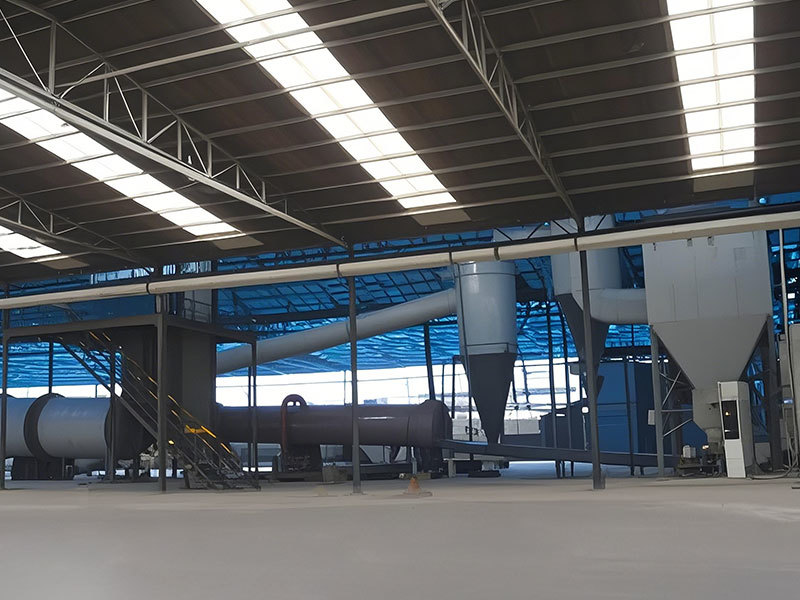How to Evaluate the Performance of Paint Dispersants in Your Products
2025-06-12
How to Evaluate the Performance of Paint Dispersants in Your Products
Table of Contents
1. Introduction to Paint Dispersants
2. The Importance of Paint Dispersants in Coatings
3. Key Performance Metrics for Paint Dispersants
3.1 Stability and Shelf Life
3.2 Viscosity Control
3.3 Pigment Dispersion Efficiency
4. Testing Methods for Evaluating Dispersants
4.1 Laboratory

How to Evaluate the Performance of Paint Dispersants in Your Products
Table of Contents
1. Introduction to Paint Dispersants
2. The Importance of Paint Dispersants in Coatings
3. Key Performance Metrics for Paint Dispersants
3.1 Stability and Shelf Life
3.2 Viscosity Control
3.3 Pigment Dispersion Efficiency
4. Testing Methods for Evaluating Dispersants
4.1 Laboratory Tests
4.2 Field Tests
5. Optimizing Formulations with Dispersants
6. Common Challenges in Dispersant Usage
7. Future Trends in Paint Dispersants
8. Conclusion
9. Frequently Asked Questions
Introduction to Paint Dispersants
Paint dispersants play a crucial role in the formulation of paints and coatings. These additives help to achieve a stable and homogeneous mixture of pigments and other components. Understanding how to effectively evaluate the performance of paint dispersants can significantly enhance the quality of your products, leading to improved customer satisfaction and competitive advantage in the market.
The Importance of Paint Dispersants in Coatings
In the world of coatings, **paint dispersants** are indispensable. They facilitate the effective distribution of pigments throughout the paint matrix, preventing clumping and settling. This ensures that the final product maintains its color consistency, opacity, and overall aesthetic appeal. Furthermore, a well-dispersed paint exhibits better performance characteristics, such as adhesion, durability, and resistance to environmental factors.
Key Performance Metrics for Paint Dispersants
To thoroughly evaluate paint dispersants, it is essential to consider several key performance metrics that reflect their effectiveness in formulations. Below are the most critical metrics to examine.
Stability and Shelf Life
One of the primary indicators of a dispersant's performance is its ability to maintain stability over time. **Stability** refers to the dispersant's capability to keep pigments suspended without settling or agglomerating. A high-performing dispersant contributes to an extended shelf life of the paint product, which is crucial for manufacturers and consumers alike.
Viscosity Control
Viscosity is another vital metric when evaluating paint dispersants. The right dispersant should help to achieve the desired viscosity of the paint formulation without compromising its flow characteristics. Ensuring that the paint remains easy to apply while maintaining optimal thickness is critical for both application and performance.
Pigment Dispersion Efficiency
**Pigment dispersion efficiency** measures how well the dispersant can break down agglomerates and distribute pigments uniformly throughout the mixture. A highly effective dispersant will achieve a finer dispersion, resulting in improved gloss, color strength, and overall product quality.
Testing Methods for Evaluating Dispersants
To accurately assess the performance of paint dispersants, various testing methods can be employed. These methods fall into two main categories: laboratory tests and field tests.
Laboratory Tests
Laboratory tests are essential for controlled evaluations of dispersant performance. Some common laboratory tests include:
- **Viscosity Measurements:** Using viscometers to measure the paint's viscosity at different shear rates helps determine how well the dispersant maintains flow characteristics.
- **Stability Tests:** Subjecting paint samples to accelerated aging conditions allows for the observation of stability over time, helping to predict the product's shelf life.
- **Particle Size Analysis:** Employing techniques such as laser diffraction to analyze the size distribution of pigment particles can indicate the effectiveness of the dispersant in achieving proper dispersion.
Field Tests
Field tests mimic real-world applications to assess how paint dispersants perform in actual conditions. Key aspects to evaluate include:
- **Application Performance:** Observing how the paint behaves during application, including its drying time, spreadability, and finish quality.
- **Durability Testing:** Assessing the paint's resistance to environmental factors, such as UV exposure and moisture, to determine long-term performance.
- **Consumer Feedback:** Gathering insights from end-users about their experiences with the paint can provide valuable information on its overall effectiveness and appeal.
Optimizing Formulations with Dispersants
Once the performance of paint dispersants has been evaluated, manufacturers can optimize their formulations to achieve the best possible results. This optimization process involves:
- **Selecting the Right Dispersant:** Choosing a dispersant that aligns with the specific pigments and resins used in the formulation to ensure compatibility and effectiveness.
- **Adjusting Concentrations:** Fine-tuning the concentration of dispersants can lead to significant improvements in performance metrics, such as viscosity and stability.
- **Incorporating Other Additives:** Combining dispersants with other additives, such as surfactants or stabilizers, can enhance the overall performance of the paint.
Common Challenges in Dispersant Usage
While paint dispersants offer numerous benefits, manufacturers may encounter several challenges during implementation. Some common issues include:
- **Incompatibility with Pigments:** Not all dispersants work well with every type of pigment, leading to potential performance issues.
- **Cost Considerations:** High-quality dispersants may come with increased costs, which can impact overall production budgets.
- **Environmental Regulations:** Compliance with environmental standards can limit the choice of dispersants, necessitating careful selection.
Future Trends in Paint Dispersants
As the paint and coatings industry evolves, so too do the formulations and technologies surrounding paint dispersants. Future trends include:
- **Sustainability:** A growing emphasis on eco-friendly and biodegradable dispersants that minimize environmental impact.
- **Advanced Polymer Technologies:** Development of new polymer-based dispersants that offer superior performance and stability.
- **Digital Formulation Tools:** The integration of technology in the formulation process to optimize dispersant usage dynamically.
Conclusion
Understanding how to evaluate the performance of paint dispersants is essential for optimizing product quality in the coatings industry. By focusing on stability, viscosity control, and pigment dispersion efficiency, manufacturers can achieve superior formulations that meet market demands. Through rigorous testing and formulation optimization, effective use of paint dispersants can lead to enhanced customer satisfaction and long-term success in a competitive landscape.
Frequently Asked Questions
**1. What are paint dispersants?**
Paint dispersants are additives that help stabilize pigments in paint formulations, ensuring uniform distribution and preventing settling.
**2. How do I choose the right dispersant for my paint?**
Selecting the right dispersant depends on the type of pigments and resins used in your formulation. Compatibility is key to ensuring optimal performance.
**3. What tests can I perform to assess dispersant efficiency?**
Laboratory tests for viscosity, stability, and particle size analysis, as well as field tests for application performance and durability, are effective methods.
**4. How can I improve the dispersion of pigments in my paint?**
Optimizing dispersant concentrations and selecting compatible additives can enhance pigment dispersion and overall paint performance.
**5. Are there any challenges associated with using paint dispersants?**
Yes, common challenges include compatibility issues with pigments, cost considerations, and adherence to environmental regulations.


 TESFA STPP
TESFA STPP